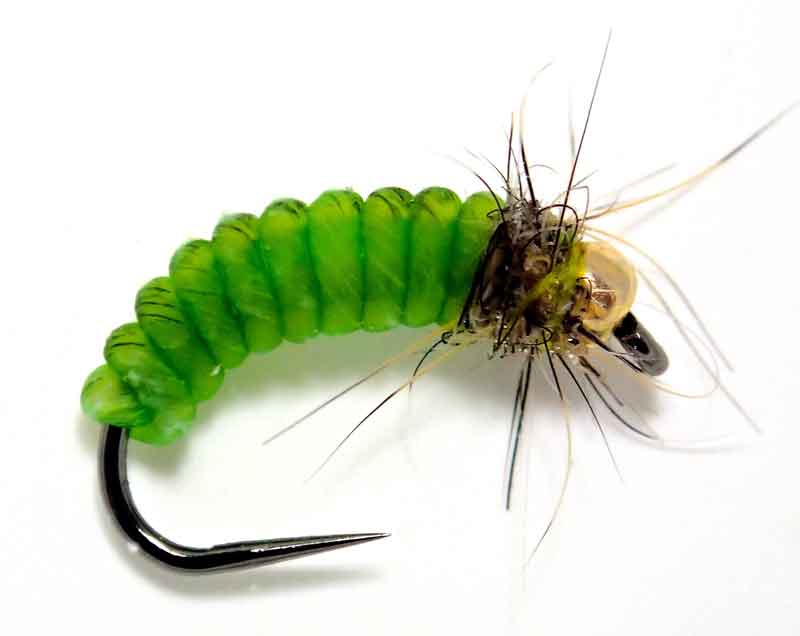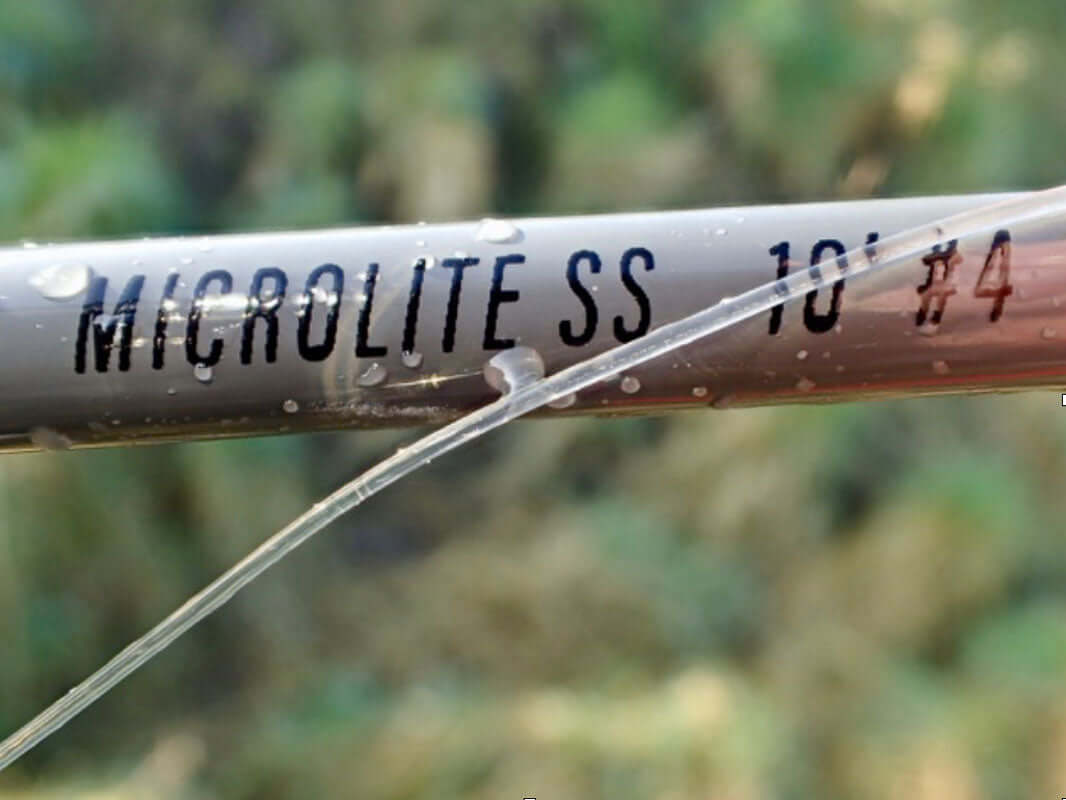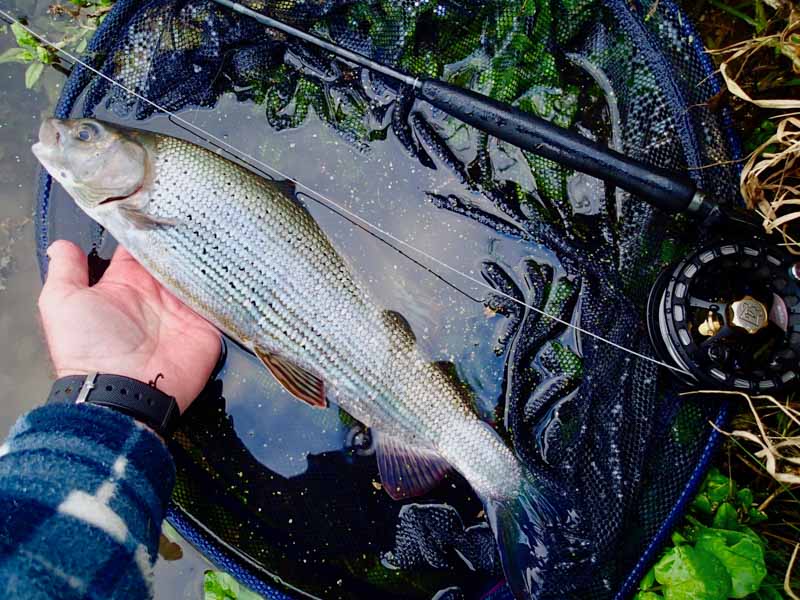By David Southall
In my November 2016 Blog I gave details of some of my favourite grayling flies (Orange & Pink Gamarus, Orange & Pink Utah Killer Bugs, Red & Pink Squirmy Worms, Bead-head Partridge & Hare’s Ear Spiders & Small Bead-head Nymphs). Here are some more that I have had great success with during the Autumn, Winter & Early Spring.

Bill Eadie’s Grayling Slayer
Hook: Jig size 16 to 10
Thread: Tan 8/0 or 6/0
Bead-head: Copper tungsten 2mm to 5mm
Body: Dubbed squirrel guard hairs (use very sticky wax to hold the hairs onto the thread)
Rib: Pear mylar
Collar: Orange Ice Dub or similar
This pattern was first shown to me several years ago by Bill Eadie who catches large numbers of huge grayling from his local Scottish rivers on this fly. It has proved to be equally successful for me on a number of rivers.

Micro-Bloodworm
Hook: Size 22 Daiichi 1200 Grub
Thread: Red 8/0
Bead-head: Red 1.5 or 2mm tungsten
Tail: Red or pink number 6 pole elastic or flexifloss
Body: Red holographic tinsel
Rib: red or pink 0.14mm diameter wire
This is a modified version of a fly shown to me by Grayling Society member Brian Clarke. It is particularly effective below sewage outfalls where there are large numbers of red Chironomid Midge larve in the bottom sediments.

Hook: Gamakatsu C12-BM size 26 to 30
Thread: 8/0 Tan well waxed
Wing & legs: A single CdC feather tip
This incredibly simple dry fly has proved to be devastatingly effective when grayling have been taking Aphids during Autumn leaf-fall & during the Winter when they have been taking tiny adult Midges.

Peeping Caddis
Hook: Long-shank size 16 to 10
Thread: Tan 6/0
Weight: Split shot sizes number 10 to Swan on a loop of nylon monofilament
Body: Dubbed Hare’s mask in a split thread loop
Hackle: Brown partridge
Head: Yellow or green synthetic wool singed/burned at the tip
I have had many grayling, including fish close to 3lb on this Oliver Edwards’ pattern which was I believe based on Hans Van Klinken’s Leadhead fly

Catgut Caddis Pupa/Larva

Hook: Grub size 16 to 12
Thread: Tan 8/0
Head: Black or gold tungsten bead, 2mm to 3.5mm
Body: Yellow or green catgut (soak the gut before tying to soften)
Legs: Dubbed squirrel guard hairs (use very sticky wax to keep the hair on the thread)
Caddis larvae & pupae are a significant component of graylings’ diets & most have yellow or green bodies. The catgut goes soft & transparent when soaked, making it very realistic.
All of these flies have produced a good number of grayling for me. It is well worth sampling the invertebrates in your river in order to discover which of the more imitative patterns might be most appropriate on your water.
































